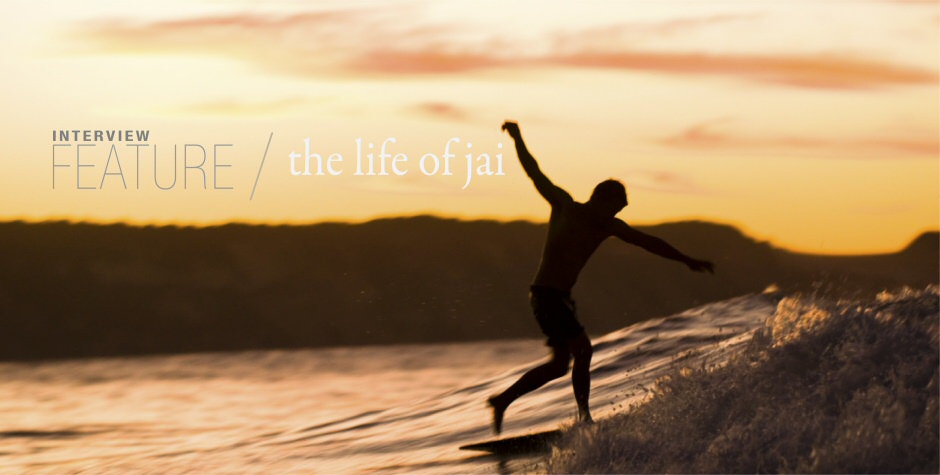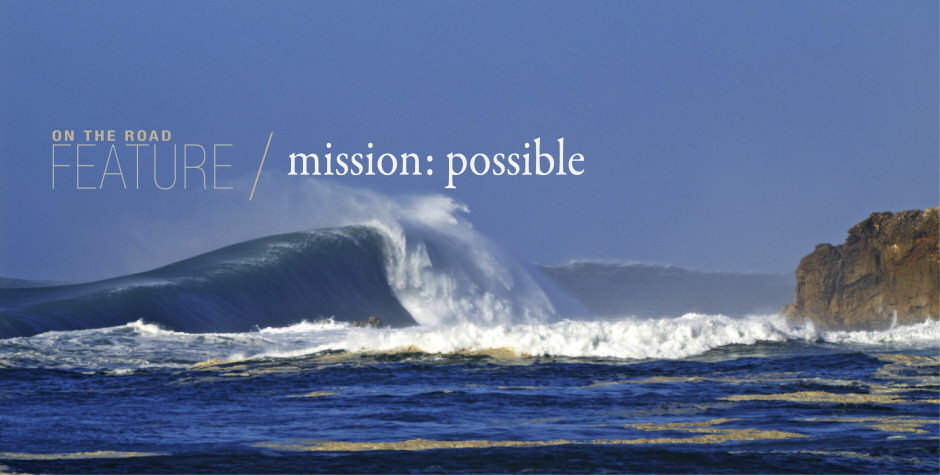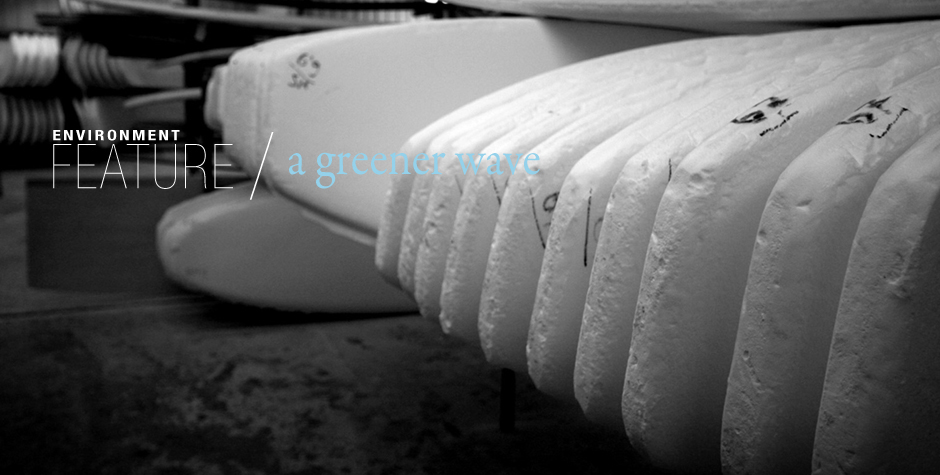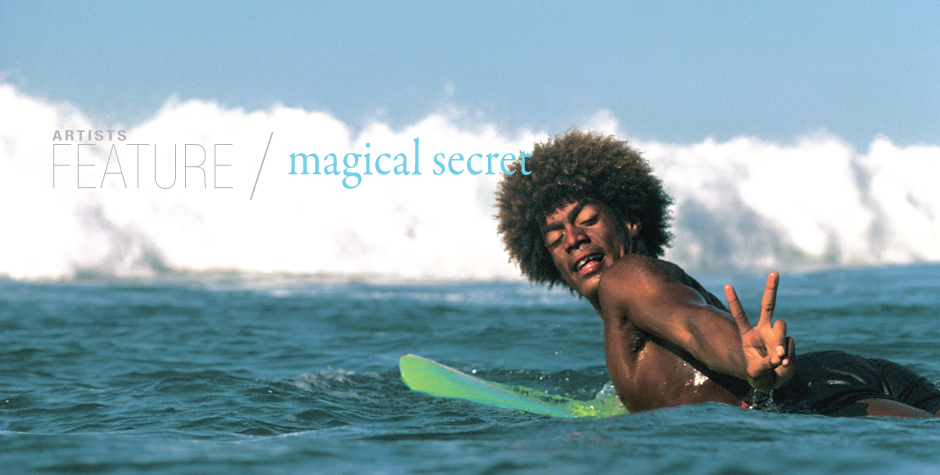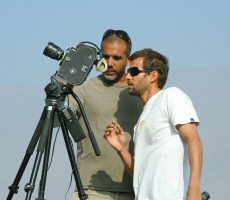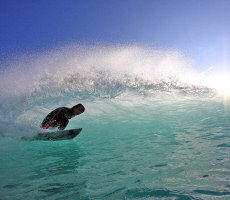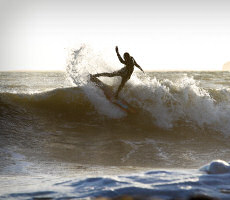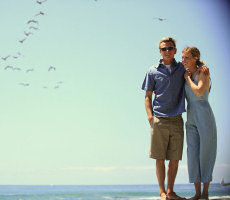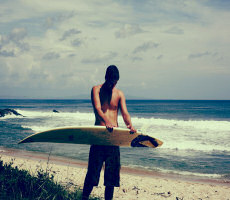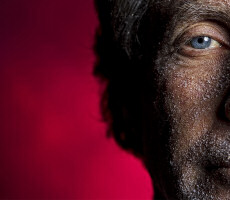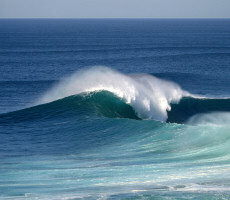Beach break fitness tips
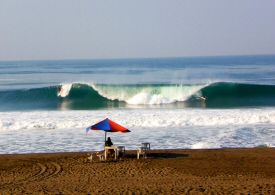 Ryan Huxley takes a look at the physical requirements and some nutritional hints for surfing your local beach break.
Ryan Huxley takes a look at the physical requirements and some nutritional hints for surfing your local beach break.
In 2010 I was fortunate enough to meander my way to southern Mexico. I had just spent 2 years vigilantly collaborating to pursue and realize my professional passion of Surfbodysoul and was playfully yet diligently teaching surf specific exercise classes and conducting Physiotherapy (Physical Therapy) sessions with my beloved band of surfing misfits in Byron Bay, Australia. A good friend of mine was in Mexico and the lure of an old truck, cheap exotic food, classic waves and a plethora of inland civilizing entertainment were too much to resist. Although hyper-exposed for many years, Puerto Escondido was glowing in my mind, particularly the concentrated energy that tests any surfer’s physical and mental capacity. Lets take a descriptive glance at the wave; the intense physical requirements it demands; a Surfbodysoul exercise and some nutritional handy-hints to ready your body for the challenge.
The Wave
Without patronizing readers who have extensive experience sliding the Mexican Pipe, Puerto Escondido is not your average beach-break. Located in the Oaxaca region on Mexico’s Pacific Coastline, Puerto Escondido is widely regarded as the heaviest beach-break in the world, and can hold massive waves. With no continental shelf here there is nothing to impede raw energy swell before it detonates on the sand. When the swell is 4 feet it is not uncommon for 8-foot rogue sets to appear. Expect to contend with large close outs, extended hold-downs, and numerous broken boards.
The Physical Requirements
There are many differences in the physical requirements placed on our bodies when surfing point breaks, compared with a heavy beach break like Puerto. One major difference is the energy system we use to propel our paddling. When we surf a point break we tend to paddle for extended periods at a smooth sub-maximal pace, for example between 60-80% of our maximum capacity (or Maximum Heart Rate). This allows oxygen to be used as the primary fuel source for our muscles (in the form of Adenosine Tri-phosphate or ATP). Oxygen is a very efficient fuel source, meaning when oxygen is converted into energy (ATP), there is little by-product that will create muscle fatigue such as the formation of lactic acid. This is why you can generally surf your local point for hours at a time without diabolical fatigue kicking in.
Lets now examine another scenario. You have just pulled off an inside wave at Puerto. You turn around to witness 8-10 feet sets stacked to the horizon. You need to haul ass, and with no leg rope getting caught inside is not an option. You paddle as strongly as you can, scratch over the first 2 waves, duck-dive through the face of the next 2, and after 1-2 minutes you reach the safety of the peak. You spend the next 10 minutes meandering out the back until you catch another wave and repeat the above process all over again. In this situation when you are in hauling-ass mode, you will be working above 90% of your maximum capacity. At such intensities you will be working far too hard too maintain oxygen as the primary fuel source to get your upper body muscles paddling. Instead the body will use glycogen, which is best derived from complex carbohydrates. The by-product of working at these high intensities is fatigue, in the form of lactic acid accumulation and a subsequent inability to continue paddling.
How to Prepare
If you are in the midst of a flat spell at home and are wondering how to physically prepare yourself for your upcoming trip to Puerto or a similarly heavy beach break, here are a couple of key training tips to explore:
Interval Training
This is ideally completed in the ocean or swimming in a pool. If you choose the ocean paddle, spend the first 10 minutes warming up at a steadily building sub-maximal level. Following this, paddle at 100% for 30 seconds, jump off your board, dive under water and hold your breathe for as long as you can. Come up and repeat this process between 4-8 times (depending on your current level of fitness) before resting for 2-3 minutes. Repeat this process 3 times. Then gently paddle for 10 minutes at the end of your session to facilitate the removal of lactic acid and reduce the effects of ‘delayed onset muscle soreness’ (DOMS).
If you feel a little ridiculous with this training option hit your local pool instead. After warming up swim the full length of the pool at 100% capacity. Immediately turn around and swim back underwater for as long as your lung capacity allows. Now gently swim back to your starting position and repeat this process 4 -8 times. Rest for 2-3 minutes, and complete this process two more times. Over time this type of session trains your muscles to use glycogen more efficiently. It also trains your body to more economically remove waste products that cause muscle fatigue and reduce paddling capacity. Complete this type of session 3-4 times per week, for 6-8 weeks prior to your trip. I guarantee you will notice a difference.
Nutrition
Because you need to have glycogen readily available for your muscles to paddle vigorously at big beach breaks, a diet high in complex carbohydrates is necessary. In athletic terms this is known as carbohydrate loading. Traditionally this has been achieved by consuming large amounts of pasta and white rice, both of which rapidly replenish glycogen reserves. Personally I think as conscious surfers we are concerned with the holistic effects of our food intake, not just the immediate loading of energy for performance. Therefore I advice a more balanced approach, adding foods in to your diet that not only replenish glycogen, but provide valuable nutritional density for our muscles, organs, and improves overall health. This includes eating starchy vegetables such as pumpkin, potato and sweet potato; and grains such as quinoa and brown rice. As a large swell approaches these foods will provide nutritionally dense glycogen to keep your charging.
After you have surfed, when you have depleted your glycogen stores it is important to quickly replenish them before your next surf. To do this eating fresh fruit with natural sugars, and dried fruit such as dates, figs, and apricots will achieve this in a nutritionally sustainable manner. Then that night at dinner you can reload your glycogen reserves by adding adequate amounts of complex carbohydrates to your meal.
So there you have it, modify your exercise routine and eating habits to successfully prepare for your next surf trip at a big wave beach break.
Ryan Huxley is the co-founder and program creator at Surfbodysoul, a website that provides safe, effective, holistic, scientific e-book exercise programs catering for surfers of all age, level and experience. Ryan is a qualified Physiotherapist, Exercise Physiologist, Advanced Yoga and Pilates instructor. His list of pro surfing clients includes Fergal Smith, Chippa Wilson, Anthony Walsh, Paige Hareb, Emi Cataldi & Rusty Miller.
